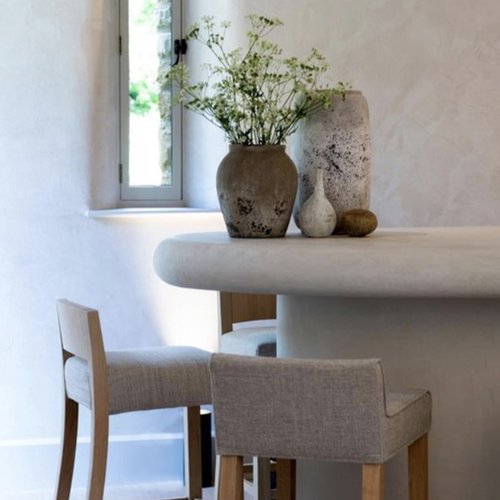
7 min read
What is Wellness Design?
How to apply the principles of Wellness Design to the Healthy Home.

Are you sitting comfortably? With health and wellness high on many people’s agendas, imagine how you would feel knowing the sofa you are reclining on was designed with your wellbeing in mind, crafted from renewable materials and in a way that supports and empowers the communities and individuals who made it.
Or that the home you are living in will contribute to you and your loved one’s health, happiness and productivity, while perhaps even helping to encourage the biodiversity of your local neighborhood to flourish.
As a designer, I’ve spent a good portion of my adult life planning, creating, and executing for other people and when it came to my own home, I was convinced I had most of the details right. I’d obsessed over everything; from paint colors and wallpaper to furniture and finishes. I was my own worst client, but in the end, I loved the calm and welcoming home I created for my family.
Turns out my idyllic home had some hard lessons in store and when my young toddler developed severe respiratory problems, we were sent down a rabbit hole trying to figure out why and what to do about it. We did all the typical medical due diligence and were still left with many unanswered questions. I was then introduced to someone who would unknowingly change the course of my life and career. He was an environmental consultant focusing on building biology, and part of his job was to test the home for pollutants and chemicals that shouldn’t be there in the first place.
To my surprise, our perfectly ordered home wasn’t all that healthy. The air quality was terrible, our water had record levels of unhealthy substances, we had mold and other chemical compounds on our walls; many of which are known respiratory irritants that can cause serious health problems. That moment was the turning point – the catalyst for change in our lives and my work as a designer.
After searching for resources to help, I found it challenging to gather even basic information on what goes into many domestic products. It was disheartening to see the opacity still shown by manufacturers, and the disinformation and greenwashing that many companies put online or on their socials.
"The future of design will demand a more holistic, more transparent and more human approach, inspired by nature and natural systems."
Lisa Sternfeld
I was seeking an inclusive online space for reliable information on how to create a healthy, sustainable and beautifully designed home. A new path beckoned and after months of frustration, it felt like the most natural and necessary solution. And just like that, the idea for WLLW was born.
I believe we’ve seen enough unhealthy products and cookie-cutter interiors, which ignore the needs of their residents. The future of design will demand a more holistic, more transparent and more human approach, inspired by nature and natural systems.
It is my mission to connect our readers with a global network of experts, designers and makers. We will support those creating beautiful and functional products that are verifiably healthy and sustainable, and we will build our community through useful and actionable content, alongside carefully curated in-person events.
A beautiful home is a healthy home and I envision a day when the buildings we live in can further contribute to our health and happiness, especially amongst communities with the greatest health disparities and highest chemical exposures.
It’s time to treat our homes as an investment in our health and wellbeing and it is my sincere hope that WLLW will provide the trusted resources and tools to help you create your own Well Life, Lived Well.

Lisa Sternfeld
Founder & CEO
Photography: Erin Derby

7 min read
How to apply the principles of Wellness Design to the Healthy Home.

3 min read
Clayworks is embracing natural materials and traditional techniques, to add depth, tonal interest and warmth to healthy homes.